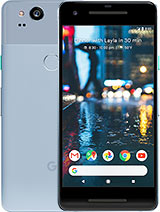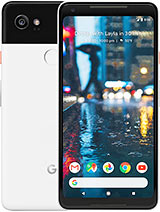P20 Pro vs Pixel 2 XL: In-Depth Camera Test Comparison By KJ Hardrict
Hi guys, it's MTG here, and today I'm going to be comparing the cameras found on the Huawei P20 Pro and the Pixel 2 XL. Many people still consider the Pixel 2 XL as having the best smartphone camera out right now, so I wanted to see how it compared to the P20 Pro's triple camera system. I'll be comparing the cameras in various lighting conditions, and I'll also look at the video and audio quality of both phones. Make sure to stick around to the end of the video to see how the cameras perform in more challenging lighting conditions, and to see what the P20 Pro's night mode is capable of. Let's get right into it. The Pixel 2 XL has a single 12.2 Megapixel sensor with an f/1.8 aperture. Using Google's image processing and machine learning, it can achieve portrait style pictures on both the front and back cameras.
The camera can record up to 4K at 30 fps and 1080p at up to 120 fps. It has both optical and electronic image stabilization. The Pixel 2 XL's front camera is 8 Megapixels with an aperture of f/2.4. It can record video at up to 1080p at 30 fps. The Huawei P20 Pro has a triple camera setup with Leica optics.
The main camera is 40 Megapixels, the monochrome camera is 20 Megapixels, and the telephoto camera that allows for 3x optical zoom and portrait mode pictures is 8 Megapixels. They have apertures of F/1.8, F/1.6, and F/2.4 respectively. The camera can record 4K video at 30 fps, 1080p at up to 60 fps, and 720p at up to 960 fps. The main camera has optical image stabilization, but can only utilize it at 1080p at 30 fps. The P20 Pro's front camera is 24 Megapixels with an f/2.0 aperture, and can record video at 1080p at 30 fps. I'm going to start off by looking at the pictures shot in great lighting.
Know that I turned off intelligent AI on the P20 Pro because the pictures looked like someone put fake filters on the images. This first side-by-side will begin to show how good the Pixel 2 XL is even in auto mode. The P20 Pro's shot is still great, don't get me wrong, but the harsh lighting caused a light streak across the top of the picture and caused the image to appear slightly washed out. In this instance, both phones did an excellent job. The P20 Pro tends to produce pictures with higher saturation to pull out more of the colors, whereas the Pixel 2 XL tends to produce images with higher levels of contrast to pull out details.
If we zoom into the "Mamma Mia" poster, we can see that despite the P20 Pro having the much larger Megapixel count, the Pixel 2 XL is able to show a comparable amount of detail. Here, the Pixel 2 XL's image is slightly brighter overall, but the P20 Pro is able to capture much more of the gradient of blues in the sky. As the side-by-sides continue, begin to notice the different ways the phones process images in different scenarios, and that will help you decide which phone's camera system will be right for you. Here, again, the P20 Pro is able to pull out more of the colors in the sky and on the buildings, but it is also overexposed in some areas. The colors don't pop as much on the Pixel 2 XL, which isn't a bad thing to many people, and the shot is perfectly exposed throughout.
The Pixel 2 XL's portrait mode had blown people away from the very start because of how great they turn out, so I was interested to see how the P20 Pro's portrait mode compared. The P20 Pro takes the much wider angled portrait shots, so in order to match the framing, I had to take a full step forward with the P20 Pro. In this scenario, I think the lack of a telephoto lens for depth information on the Pixel 2 XL lead to it struggling with differentiating between the foreground and the background. Whereas, the P20 Pro does a great job with edge detection, dealing with the harsh lighting, and pulling out the colors in the sky. In this image of me, the lighting was harsh again because there were no clouds in the sky, but both phones still handled their shots well.
The Pixel 2 XL is able to pull out much more detail on my face, neck, and shirt, whereas the P20 Pro seemed to really soften the details in the same areas. Both phones also take high quality selfies. Similar trends as the rear cameras hold. The P20 Pro has more saturation, whereas the Pixel 2 XL tries to capture as much detail as possible, especially around my face. The P20 Pro also appears to have more of a noticeable depth of field than the Pixel 2 XL.
Both phones have front camera portrait modes, however, and I think the Pixel 2 XL took the much better image. Even with beauty mode turned off on the P20 Pro, the Pixel 2 XL is able to pick up so much more detail. As I shift into video, know that the P20 Pro does not let you turn on image stabilization for 4K or even 1080p at 60 fps. It only lets you turn it on for 1008p at 30 fps. The 4K video of both phones show very similar levels of saturation and dynamic range.
Both phones really try to saturate their 4K video. However, the optical and electronic image stabilization of the Pixel 2 XL makes the lack of stabilization of the P20 Pro so blatantly obvious that I would never shoot 4K on the P20 Pro for actual footage unless I was using a tripod or gimbal of some sort. As I have said before in other videos, this is such a shame because in 1080p, the P20 Pro produces some of the most stable video I have ever seen on any smartphone. It should also be noted that on both phones, the saturation levels aren't nearly as high when they are in 1080p. The colors look a little more natural.
Both front cameras produce solid video. Both don't have stabilization so the videos are kind of shaky. Given the fact that the sun was directly behind me, I'd say that both phones did a pretty good job of keeping my face clear and in focus for the most part. In terms of audio, I'd say that the P20 Pro produced audio that was very slightly more tinny and less full, but in most instances the differences seemed pretty marginal. I will add that as the sun was in front of me, the P20 Pro did the better job of keeping my face properly exposed.
But as I always mention in my camera comparisons, phones at this price point are expected to perform well in great lighting. So the rest of this video will be focused on images shot in more challenging lighting conditions. This shot is challenging because the sun is in the image. Both did a good job of still capturing the sky, but the Pixel 2 XL was able to capture significantly more of everything else in frame. Here, light is coming through the window, and both phones are able to keep the foreground visible.
But the Pixel 2 XL's auto-HDR capabilities have a clear advantage in this scenario. On the Pixel 2 XL's image, the sky isn't overexposed like on the P20 Pro's image, and the foreground is much brighter and clearer. The sun was setting as I took this image, and although both phones produced very detailed pictures, the Pixel 2 XL almost completely greys out any blues in the sky, which are still preserved in the P20 Pro's shot. Now I'm going to shift to even more challenging lighting conditions, and I'm going to look at pictures shot at night. At night, the Pixel 2 XL will automatically try to brighten the image as much as possible, while keeping image noise to a minimum, and it can usually produce some really solid results.
The P20 Pro's shots produced in auto just looked really dark, and frankly not really usable. That's where night mode comes in. Night mode gives the P20 Pro the information it needs to really brighten up the image and retain detail, while still keeping noise to a minimum. In Night Mode, the P20 Pro keeps its shutter open for a full 4 to 6 seconds. And utilizing AI and image stabilization, it is able to remove any sort of motion blur caused by hand movement.
Night Mode produces pictures that are objectively better than the Pixel 2 XL's in just about every way. Lights aren't blown out, more detail is captured, and more contrast is visible. But there are some instances like this one where the Pixel 2 XL's image processing alone can get close to what the P20 Pro's night mode can capture in 6 seconds. Keep in mind that yes, night mode is awesome, but it does take a full, uninterrupted 4 to 6 seconds to shoot, whereas the Pixel 2 XL is taking all of these pictures almost instantly. This camera comparison was pretty interesting.
There were scenarios where P20 Pro was the clear winner, and others where the Pixel 2 XL was the clear winner. It's still very impressive that the Pixel 2 XL is able to do everything it does with just a single camera on its back. At the end of the day, people will prefer the camera that performs well in the scenarios they're more likely to shoot in. So hopefully this video helped you decide the phone that would work best for what you want it to capture. If you're new to the channel, I post a lot of cool camera comparisons like this one, and I also post some cool reviews.
Make sure you're subscribed and have the notification bell clicked to see them first. That's all I had to talk about today, thanks for watching, and I will see you in the next video.
Source : KJ Hardrict














![POCO F3 Full Review [The HOT Flagship Killer]](https://img.youtube.com/vi/aApFxEasnIc/maxresdefault.jpg )











